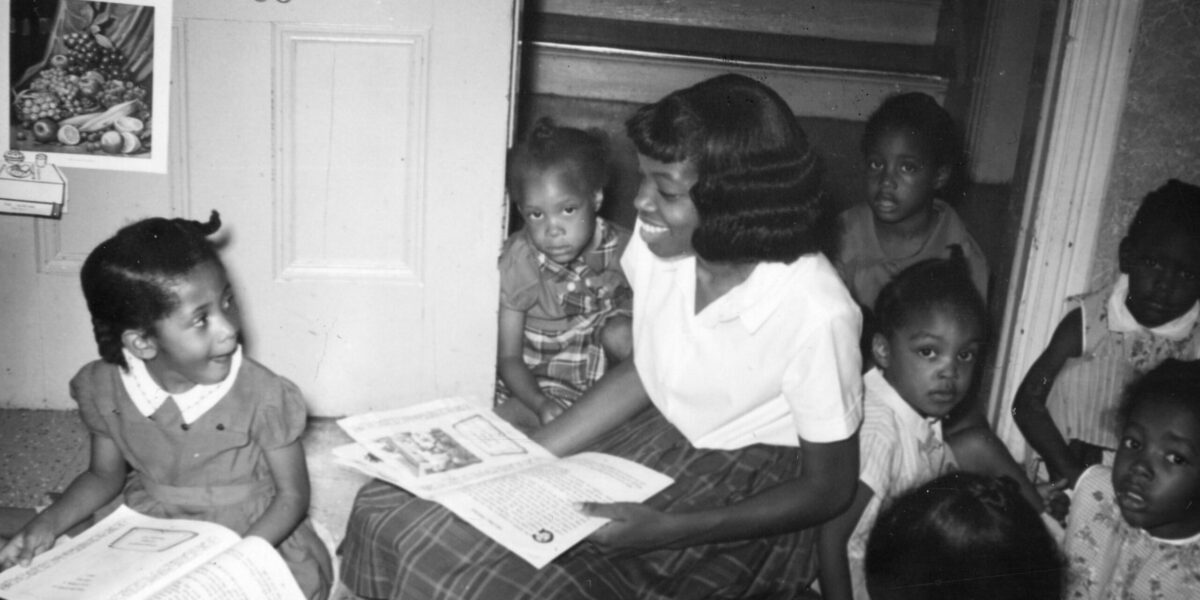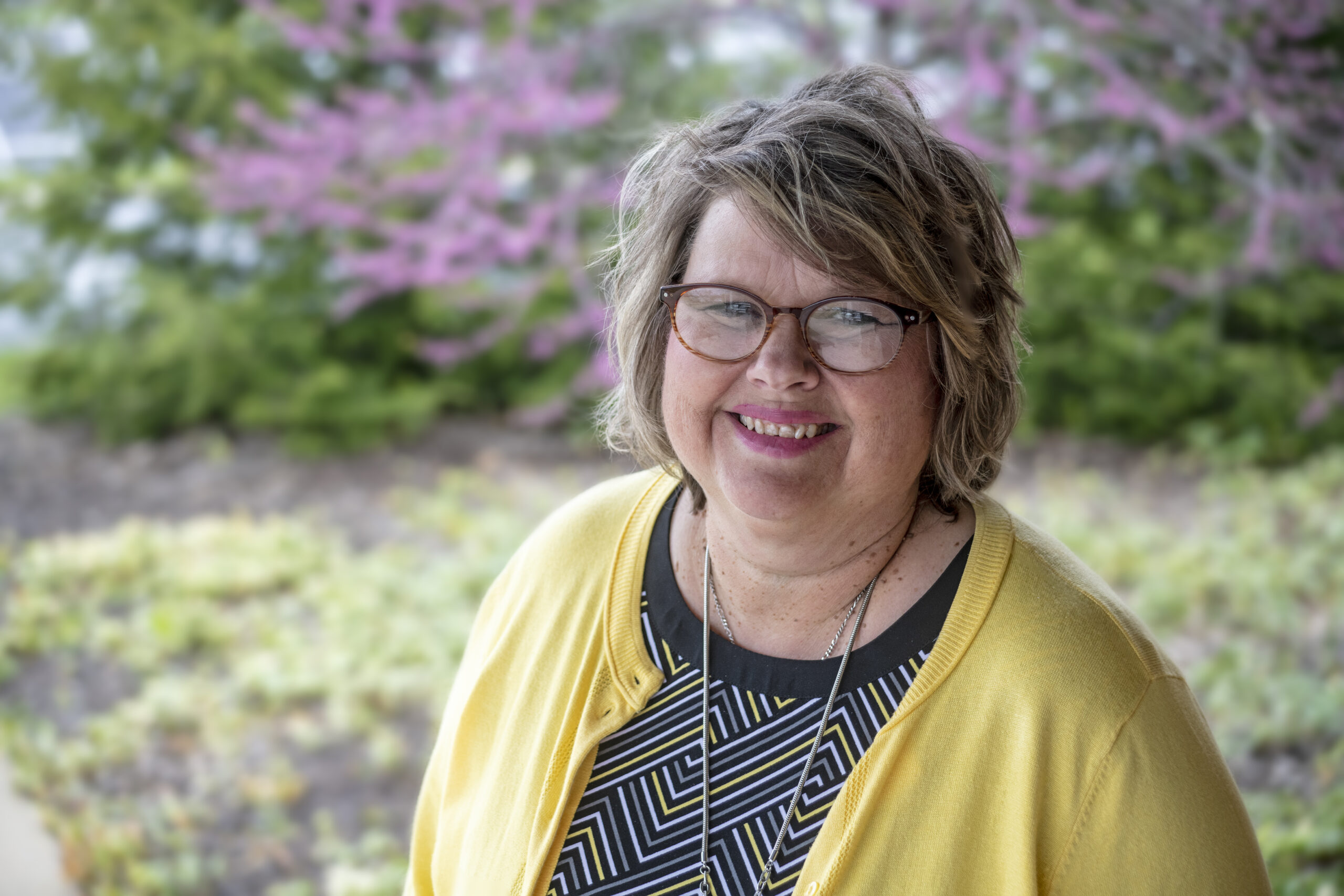Henry Hochstetler cultivating at CPS Camp 138 in Malcolm, Nebraska, in 1946.
1940–1960
World War II was underway when the 1940s began. Historic peace churches responded to this violence by creating peace-oriented conduits for service. For example, in the United States, Civilian Public Service (CPS) provided an alternative to military service during World War II. Beginning in 1941, nearly 12,000 conscientious objectors (many of them Mennonites) performed work of national importance in 152 CPS camps throughout the United States and Puerto Rico.
As CPS wound down in the mid-1940s, Mennonites explored how they might create peacetime service programs to continue the types of projects performed by CPS. This exploration birthed two programs: Voluntary Service, which initially arose in the former Mennonite Church in 1944 as a summer service program; and a similar program, Mennonite Voluntary Service, in the former General Conference Mennonite Church. These two programs merged to become one program, MVS, before the two former denominations merged to form Mennonite Church USA in 2002.
Beginning in 1952, during the Korean War, Selective Service required COs to perform "civilian work contributing to the maintenance of the national health, safety or interest." This became 1-W, which replaced the World War II-era CPS.
The 1950s also saw segregation ruled illegal in the United States and the beginning of the civil rights movement. This ruling was welcomed by many Mennonites who were already working at anti-racism efforts in the churches and communities through MVS and 1-W. Mennonite youth were leaving farms for inner-city assignments, where they were being exposed for the first time to multiracial neighborhoods and the joys and tensions that created.
Furthermore, the birth of Mennonite-originated mental health hospitals began. In World War II, many CPS participants worked in mental health institutions, witnessing very poor conditions. When these participants went home, they shared about the injustices. This evoked concern leading to the establishment of Anabaptist-run mental health ministries.

Voluntary Service unit at Frontier Boys Village, Divide, Colorado, 1965.
1960–1980
The 1960s can be summed up as the Vietnam War, hippies, drugs, protests, and rock ‘n roll. For Mennonites, the 1960s was a time when their values of nonresistance, stewardship and community dovetailed with the changes erupting among young adults in American society. For example, many draftee Mennonites declared CO status during the Vietnam War and entered the ranks of MVS and 1-W volunteers across the country.
The Vietnam War was still a major event in the early 1970s. However, the draft ending in 1973 had a major impact on MVS. Its numbers of participants declined when the program became truly only voluntary and not just a combination of alternate and voluntary service.

A Yellow Creek Mennonite Church (Goshen, Indiana) MYFer plays with kids from a day care program in Montreal, Quebec, Canada, during a Group Venture experience in 1988.
1980–2000
By this time, MVS held steady in its numbers, albeit a greater interest in shorter-term programs began to rise, birthing new programs: Service Adventure, Youth Venture, DOOR, and SOOP.
In 1995, the former General Conference Mennonite Church and the former Mennonite Church realized they no longer had the resources to run separate programs, and so merged VS and MVS, and that merger became MVS. From 1996 through 2001, the program was shared with MVS in the former General Conference Mennonite Church in Canada.

Stanley W. Green, executive director of Mennonite Mission Network, and Lawrence Romo, director of the U.S. Selective Service, sign the contract formalizing Mennonite Voluntary Service as the first group to become an official alternative service program for conscientious objectors with the U.S. Selective Service in 2010.
2000 through the present
In 2002, when the binational denominations—the former General Conference Mennonite Church (GC) and the Mennonite Church (MC)—merged, they also divided at the border to form two national churches: Mennonite Church Canada and Mennonite Church USA. Five years before the denominational merger, the GC’s MVS program and the MC’s VS program had merged in anticipation of the future change. In 2002, this trans-national union dissolved.
For the next several years, MVS pulled in about 100 participants each year. That number rose some during the great recession of 2008-2009. But once jobs became more plentiful again, the numbers dipped steadily to its current-day number of 25 participants each year.
As 2020 approaches, another juncture of re-imagining is needed, according to Sandy Miller, senior executive for Resourcing and Mobilization for Mission Network. Mission Network is transitioning from only providing programs to also being open to partnering with congregations and groups across the church who want to create and maintain their own programs and initiatives.









